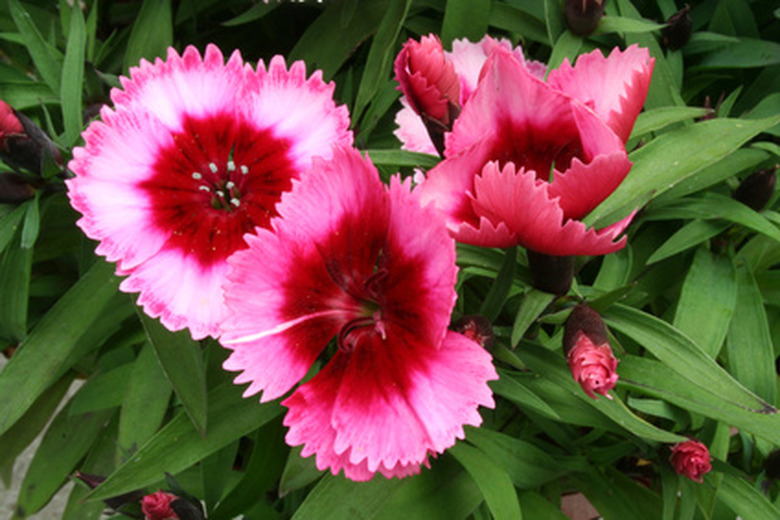How To Deadhead Dianthus Flowers
Things Needed
-
Pruning shears or scissors
-
Bucket or basket
Dianthus's bright pink, red or lavender flowers with ruffled edges have been popular with gardeners for centuries. Some flowers in the Dianthus genus include maiden pinks, sweet william and carnations. Different dianthus flowers may bloom profusely throughout the summer, or blossom production may wax and wane. Deadheading, or the removal of spent blossoms, will help ensure constant flowers in your garden throughout the growing season. Deadheading dianthus allows the plants to direct their energy into growing more blossoms and denser foliage instead of producing seeds.
Step 1
Wait until the petals of your dianthus have started to fade, wilt or fall off before you deadhead. You may also cut dianthus in full bloom to bring indoors in a bouquet, and that will serve the same purpose as deadheading.
Step 2
Use pruning shears or a pair of scissors to cut the faded flower stem back to the base, just above the nearest set of leaves. You may cut a few leaves for bouquets, but make sure the plant has some leaves left for photosynthesis.
Step 3
Collect the dead flower stalks in a basket or bucket to carry to the compost pile. Place any cut flowers intended for a bouquet into water immediately.
Step 4
Continue to monitor your dianthus over the course of the summer and fall. Depending on the species, some dianthus flowers may only need to be deadheaded once or twice during the growing season, while others may need attention every week.
Tip
Dianthus that are regularly deadheaded will not produce seeds. If you wish to save some dianthus seeds to grow in your garden next year, either stop deadheading a few weeks before the end of the growing season to allow the seeds time to form and mature, or set aside a few dianthus plants specifically for seed production and do not deadhead them at all.
Dianthus may be an annual, biennial or perennial, depending on the climate and species. Some dianthus are classified as self-seeding annuals, and will come back the following year only if allowed to go to seed in the fall.
If you are growing a smaller, more delicate species of dianthus, you may be able to simply pinch back the flowers with your fingertips instead of clipping them with pruning shears.
Warning
Sometimes new, fresh buds can resemble dead flowers. Take a good look at what you're about to snip to make sure you're getting spent blossoms.
